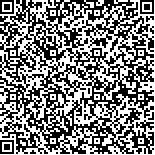下载中心
优秀审稿专家
优秀论文
相关链接
摘要

作为驱动地表与大气之间能量交换的关键物理量,地表温度在众多领域中都发挥着重要作用,包括气候变化、环境监测、蒸散发估算以及地热异常勘探等。Landsat热红外数据因其时间连续性和高空间分辨率等特点被广泛应用于地表温度反演中。本文详细地介绍了Landsat热红外传感器及其可用的数据与产品的现状,梳理了2001年—2020年20年间基于Landsat热红外数据的地表温度遥感反演与应用的相关文献发表及互引情况,系统地综述了基于Landsat热红外数据的地表温度反演算法,包括基于辐射传输方程的算法、单窗算法、普适性单通道算法、实用单通道算法和分裂窗算法等。在此基础上,进一步介绍了每种算法的参数化方案,包括地表比辐射率和大气参数的估算方法。最后针对Landsat热红外数据地表温度遥感反演提出了未来可能的发展趋势与研究方向。
Land Surface Temperature (LST) is a pivotal factor in the energy exchange procedure between the land surface and the atmosphere. It plays a critical role in various study fields, including regional and global climate change analysis, environment monitoring, evapotranspiration estimation, and geothermal anomaly exploration. How to accurately capture LST from satellites data is one of the international hot spots and frontier topics in the quantitative remote sensing of surface parameters, and numbers of algorithms and products have been developed since 1960s. Specially, due to the advantage of high-spatial resolution, temporal continuity, and data availability, Landsat thermal infrared (TIR) data is generally used for LST retrieval. Landsat sensors and related LST products are introduced in detail at this paper, involving in Landsat 4-5 TM, Landsat 7 ETM+, and Landsat 8 TIRS. By analyzing the abundant academic papers, this article reviews the related publications and citations from 2000 to 2020 about Landsat LST retrieval by dividing them into two parts: algorithm and application. Furthermore, this paper systematically describes the algorithms for LST retrieved from Landsat TIR data including the Radiative Transfer Equation (RTE)-based algorithm, the mono-window algorithm, the generalized single-channel algorithm, the practical single-channel algorithm, and the split-window algorithm. On this basis, this article introduces the methods to obtain relevant parameters of each algorithm including atmospheric parameters and land surface emissivity. Furthermore, the calculation of atmospheric parameters mainly depends on water vapor and air temperature near the surface and atmospheric profiles, which can be obtained in three ways including ground-based sounding data, satellite inversion and reanalysis data. The methods estimating land surface emissivity depend on surface classification and NDVI images. Additionally, the superiority of high-spatial resolution LST from Landsat products makes them often applied to urban heat island effect, disaster monitoring, the LST impact for land use and land cover, where the studies require high-precision satellite images to facilitate detailed topics. With the development of science and technology, high-resolution data makes current problems in LST retrieval more and more obvious. According to the analysis for academic papers in the past 20 years, the research on the algorithm and application of LST retrieval based on Landsat TIR data shows an overall upward trend, and the Landsat LST retrieval and application will continuously play the important role in the future. Therefore, the prospective research trend and directions are proposed for Landsat TIR data, and this paper pointes out 4 directions for subsequent studies, including LST retrieval at the complex terrain region, LST retrieval under the cloud cover, spatio-temporal fusion of multi-source data, and long-term serial LST products. Finally, this article indicates that the uncertainty of land surface emissivity, real complex land surface, and banding effect causing LST errors. Therefore, more scholars should pay attention to these problems and actively propose new methods to solve the current deficiency. Moreover, it is helpful to further understand the mechanism of LST retrieval from remote sensing, provide inspiration for the establishment of new methods for remote sensing retrieval of LST, and promote the research level of quantitative remote sensing of LST in China..

